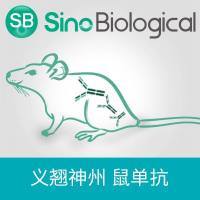Steroid Hormone Metabolites and Hormone Binding Assays
互联网
互联网
相关产品推荐

Recombinant-Mesocricetus-auratus-Probable-polyprenol-reductaseSrd5a3Probable polyprenol reductase EC= 1.3.1.- Alternative name(s): 3-oxo-5-alpha-steroid 4-dehydrogenase 3 EC= 1.3.99.5 Steroid 5-alpha-reductase 3; S5AR 3; SR type 3
¥11718

PTH / PTH1 / Parathyroid Hormone 鼠单抗
¥600

Mannan Binding Lectin/MBL2 兔多克隆抗体
¥1699

WIP (Lysis Buffer for WB/IP Assays, Nondenaturing)(C-0013)-30ml/60ml/100ml
¥70

Recombinant-Rat-Probable-polyprenol-reductaseSrd5a3Probable polyprenol reductase EC= 1.3.1.- Alternative name(s): 3-oxo-5-alpha-steroid 4-dehydrogenase 3 EC= 1.3.99.5 Steroid 5-alpha-reductase 3; S5AR 3; SR type 3
¥11718

